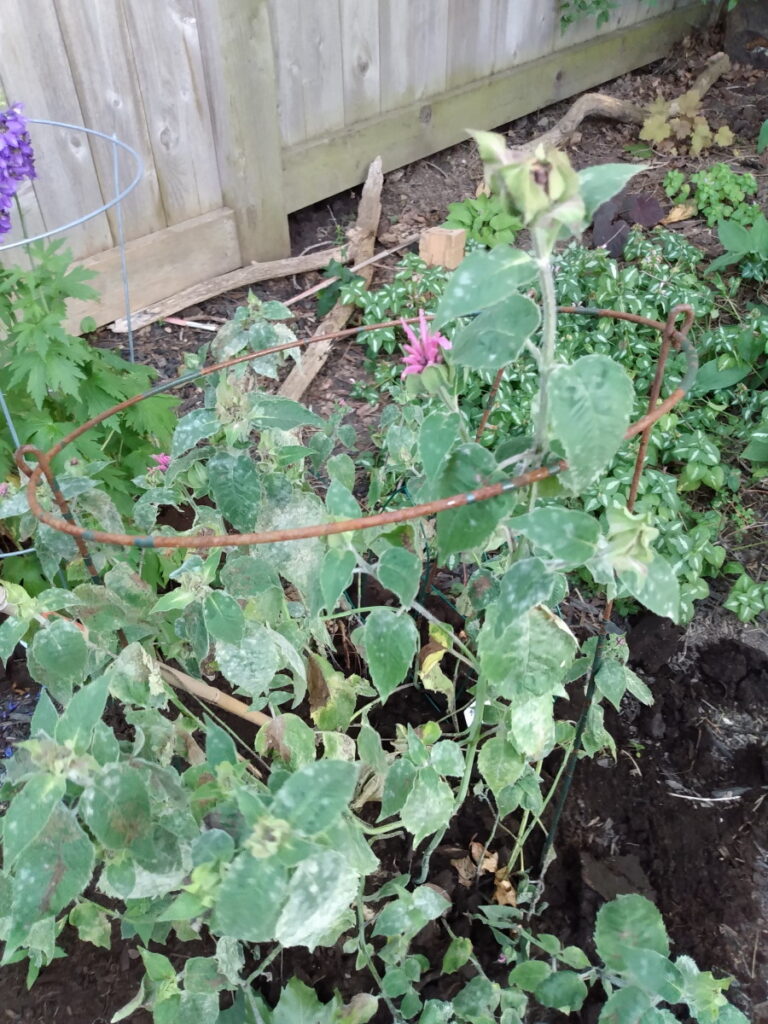
My Bee Balm has a white substance on all the leaves. Surprisingly it as started to show a few flowers. What do I do to get rid of the residue.
Can it spread to other plants in my garden?
I appreciate your help.
Bee balm is the common name for a fragrant flowering plant in the Monarda genus. The white substance on your plant is probably due to powdery mildew. This common fungal disease is caused by a fungus whose spores overwinter in garden debris and are spread by the wind. It affects several plants including lilacs, roses, zinnias, phlox and peonies.
The first line of defense against powdery mildew in bee balm is to choose powdery mildew resistant plants. For a list of resistant species please see the following websites:
https://hortnews.extension.iastate.edu/1999/7-2-1999/beebalms.html
https://www.finegardening.com/article/coping-with-powdery-mildew
When growing bee balms you can control powdery mildew through appropriate cultural practices. These include the following:
- Plant the bee balm where they will receive at least six hours of sun each day.
- Ensure that the soil is moist with rich organic matter.
- Space the plants two to two and half feet apart.
- Mulch the soil around the plants with wood chips or other organic mulch.
- Ensure the soil does not dry out but is kept uniformly moist.
- Avoid watering the leaves instead water the plant at the soil level.
- Remove and destroy disease-infested plant debris in fall.
- Divide the plants every two to three years to avoid overcrowding.
You can treat a powdery mildew with a fungicide. It should be applied early in the season. As soon as any spots are noticed on the plant remove infected leaves and place them in the garbage. Spray fungicide on healthy leaves. The plant may need repeated applications. If the majority of the leaves have powdery mildew, it might be too late to treat and the plant should be removed.
For more information on treating powdery mildew, review the following website:
https://extension.umn.edu/plant-diseases/powdery-mildew-flower-garden

